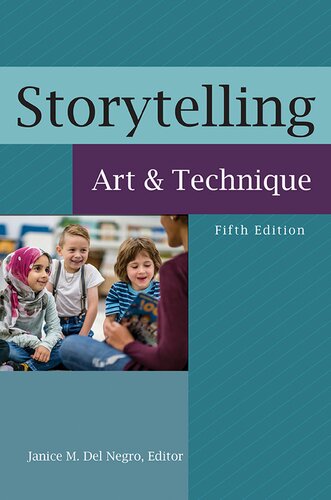

Most ebook files are in PDF format, so you can easily read them using various software such as Foxit Reader or directly on the Google Chrome browser.
Some ebook files are released by publishers in other formats such as .awz, .mobi, .epub, .fb2, etc. You may need to install specific software to read these formats on mobile/PC, such as Calibre.
Please read the tutorial at this link. https://ebooknice.com/page/post?id=faq
We offer FREE conversion to the popular formats you request; however, this may take some time. Therefore, right after payment, please email us, and we will try to provide the service as quickly as possible.
For some exceptional file formats or broken links (if any), please refrain from opening any disputes. Instead, email us first, and we will try to assist within a maximum of 6 hours.
EbookNice Team

Status:
Available4.7
25 reviews
ISBN 10: 1440872090
ISBN 13: 9781440872099
Author: Janice Del Negro
This book serves as both a textbook and reference for faculty and students in LIS courses on storytelling and a professional guide for practicing librarians, particularly youth services librarians in public and school libraries. Storytelling: Art and Technique serves professors, students, and practitioners alike as a textbook, reference, and professional guide. It provides practical instruction and concrete examples of how to use the power of story to build literacy and presentation skills, as well as to create community in those same educational spaces. This text illustrates the value of storytelling, covers the history of storytelling in libraries, and offers valuable guidance for bringing stories to contemporary listeners, with detailed instructions on the selection, preparation, and presentation of stories. It also provides guidance around the planning and administration of a storytelling program. Topics include digital storytelling, open mics and slams, and the neuroscience of storytelling. An extensive and helpful section of resources for the storyteller is included in an expanded Part V of this edition.
PART I: FOUNDATION
1. The Why of Storytelling
2. Storytelling to Children in Libraries: A History
3. The Benefits of Listening
PART II: PRACTICE
4. Demystifying Selection
5. Preparation
6. Presentation: Storytelling with Music
7. Researching Folktales
PART III: AUDIENCE
8. StoryPlay: Telling Stories to Young Children
9. Storytelling to Young Adults
10. From Listening to Telling: How Children and Young Adults Get Stories Off the Page; Story Theater
PART IV: PROGRAMMING
11. Developing Inclusive Storytelling Experiences: Storytelling to Children with Special Needs
12. Story Programming 101: Advocacy and Administration
13. Digital Storytelling
14. Storytelling with Folktales: History, Community, and Appropriation
PART V: RESOURCES FOR THE STORYTELLER
Professional Reading
art and storytelling
storytelling art
zentangle art story
storytelling art examples
the art of visual storytelling
Tags: Janice Del Negro, Storytelling, Art